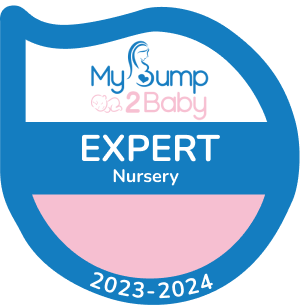Computer Vision vs Image Recognition: Key Differences Explained
Image Recognition: Definition, Algorithms & Uses
The neural network learns about the visual characteristics of each image class and eventually learns how to recognize them. Our software development company specializes in development of solutions that can perform object detection, analyze images, and classify it accurately. We use a deep learning approach and ensure a thorough system training process to deliver top-notch image recognition apps for business. The evolution of image recognition has seen the development of techniques such as image segmentation, object detection, and image classification. Image segmentation involves dividing an image into meaningful regions, allowing for more precise object recognition and analysis. Object detection, on the other hand, focuses on localizing and identifying multiple objects within an image.
The pre-processing step is where we make sure all content is relevant and products are clearly visible. Neural networks are a type of machine learning modeled after the human brain. Here’s a cool video that explains what neural networks are and how they work in more depth. This usually requires a connection with the camera platform that is used to create the (real time) video images. This can be done via the live camera input feature that can connect to various video platforms via API. The outgoing signal consists of messages or coordinates generated on the basis of the image recognition model that can then be used to control other software systems, robotics or even traffic lights.
Training Process of Image Recognition Models
In the age of information explosion, image recognition and classification is a great methodology for dealing with and coordinating a huge amount of image data. Here, we present a deep learning–based method for the classification of images. Although earlier deep convolutional neural network models like VGG-19, ResNet, and Inception Net can extricate deep semantic features, they are lagging behind in terms of performance. In this chapter, we propounded a DenseNet-161–based object classification technique that works well in classifying and recognizing dense and highly cluttered images.
The right image classification tool helps you to save time and cut costs while achieving the greatest outcomes. Various kinds of Neural Networks exist depending on how the hidden layers function. For example, Convolutional Neural Networks, or CNNs, are commonly used in Deep Learning image classification. The data provided to the algorithm is crucial in image classification, especially supervised classification. Let’s dive deeper into the key considerations used in the image classification process. After completing this process, you can now connect your image classifying AI model to an AI workflow.
Image recognition versus Object detection:
The use of artificial intelligence (AI) for image recognition offers great potential for business transformation and problem-solving. Predominant among them is the need to understand how the underlying technologies work, and the safety and ethical considerations required to guide their use. After an image recognition system detects an object it usually puts it in a bounding box. But sometimes when you need the system to detect several objects, the bounding boxes can overlap each other. According to the recent report, the healthcare, automotive, retail and security business sectors are the most active adopters of image recognition technology.
- Datasets up to billion parameters require high computation load, memory usage, and high processing power.
- This data is collected from customer reviews for all Image Recognition Software companies.
- With its ability to pre-train on large unlabeled datasets, it can classify images using only the learned representations.
- With time the image recognition app will improve its skills and provide impeccable results.
The developers upload a sample photo, actually dozens or even hundreds of them and let the system explore the digital image, detect what car is on it, what kind of damage is present, what parts are broken, etc. Thoroughly pre trained system can detect and provide all information within seconds and make the work of insurance agents more effective, fast and accurate. Social media is one more niche that already benefits from image recognition technology and visual search.
It’s also capable of image editing tasks, such as removing elements from an image while maintaining a realistic appearance. But the really exciting part is just where the technology goes in the future. The problem has always been keeping up with the pirates, take one stream down, and in the blink of an eye, it is replaced by another or several others. Image detection can detect illegally streamed content in real-time and, for the first time, can react to pirated content faster than the pirates can react.
The objects in the image that serve as the regions of interest have to labeled (or annotated) to be detected by the computer vision system. Some of the massive publicly available databases include Pascal VOC and ImageNet. They contain millions of labeled images describing the objects present in the pictures—everything from sports and pizzas to mountains and cats. He described the process of extracting 3D information about objects from 2D photographs by converting 2D photographs into line drawings. The feature extraction and mapping into a 3-dimensional space paved the way for a better contextual representation of the images.
Single Shot Detector
We can easily recognise the image of a cat and differentiate it from an image of a horse. Before starting with this blog, first have a basic introduction to CNN to brush up on your skills. The visual performance of Humans is much better than that of computers, probably because of superior high-level image understanding, contextual knowledge, and massively parallel processing. But human capabilities deteriorate drastically after an extended period of surveillance, also certain working environments are either inaccessible or too hazardous for human beings.
First, a neural network is formed on an Encoder model, which ‘compresses’ the 3Ddata of the cars into a structured set of numerical latent parameters. To build an ML model that can, for instance, predict customer churn, data scientists must specify what input features (problem properties) the model will consider in predicting a result. That may be a customer’s education, income, lifecycle stage, product features, or modules used, number of interactions with customer support and their outcomes.
Machines: the new muse to creativity
“The power of neural networks comes from their ability to learn the representation in your training data and how to best relate it to the output variable that you want to predict. Mathematically, they are capable of learning any mapping function and have been proven to be universal approximation algorithms,” notes Jason Brownlee in Crash Course On Multi-Layer Perceptron Neural Networks. Facial recognition is the use of AI algorithms to identify a person from a digital image or video stream. AI allows facial recognition systems to map the features of a face image and compares them to a face database. The comparison is usually done by calculating a similarity score between the extracted features and the features of the known faces in the database.
Speaking about the numbers, the image recognition market was valued at $2,993 million last year annual growth rate is expected to increase by 20,7% during the upcoming 5 years. Machine learning example with image recognition to classify digits using HOG features and an SVM classifier. However, if specific models require special labels for your own use cases, please feel free to contact us, we can extend them and adjust them to your actual needs. We can use new knowledge to expand your stock photo database and create a better search experience. The next step is separating images into target classes with various degrees of confidence, a so-called ‘confidence score’.
These are the number of queries on search engines which include the brand name of the solution. Compared to other AI Solutions categories, Image Recognition Software is more concentrated in terms of top 3 companies’ share of search queries. Top 3 companies receive 99%, 21.0% more than the average of search queries in this area.
It is a sub-category of computer vision technology that deals with recognizing patterns and regularities in the image data, and later classifying them into categories by interpreting image pixel patterns. Besides ready-made products, there are numerous services, including software environments, frameworks, and libraries that help efficiently build, train and deploy machine learning algorithms. The most well-known TensorFlow from Google, Python-based library Keras, open-source framework Caffe, gaining popularity PyTorch, and Microsoft Cognitive Toolkit providing full integration of Azure services.
How Artificial Intelligence is Impacting the U.S. Workplace (Part I) – Lexology
How Artificial Intelligence is Impacting the U.S. Workplace (Part I).
Posted: Tue, 31 Oct 2023 08:00:12 GMT [source]
The ImageNet Large Scale Visual Recognition Challenge (ILSVRC) was when the moment occurred. The ILSVRC is an annual competition where research teams use a given data set to test image classification algorithms. Convolutions work as filters that see small squares and “slip” all over the image capturing the most striking features. Convolution in reality, and in simple terms, is a mathematical operation applied to two functions to obtain a third. The depth of the output of a convolution is equal to the number of filters applied; the deeper the layers of the convolutions, the more detailed are the traces identified. The filter, or kernel, is made up of randomly initialized weights, which are updated with each new entry during the process [50,57].
The MNIST images are free-form black and white images for the numbers 0 to 9. It is easier to explain the concept with the black and white image because each pixel has only one value (from 0 to 255) (note that a color image has three values in each pixel). Therefore, it could be a useful real-time aid for nonexperts to provide an objective reference during endoscopy procedures. A second 3×3 max-pooling layer with a stride of two in both directions, dropout with a probability of 0.5.
Read more about https://www.metadialog.com/ here.













